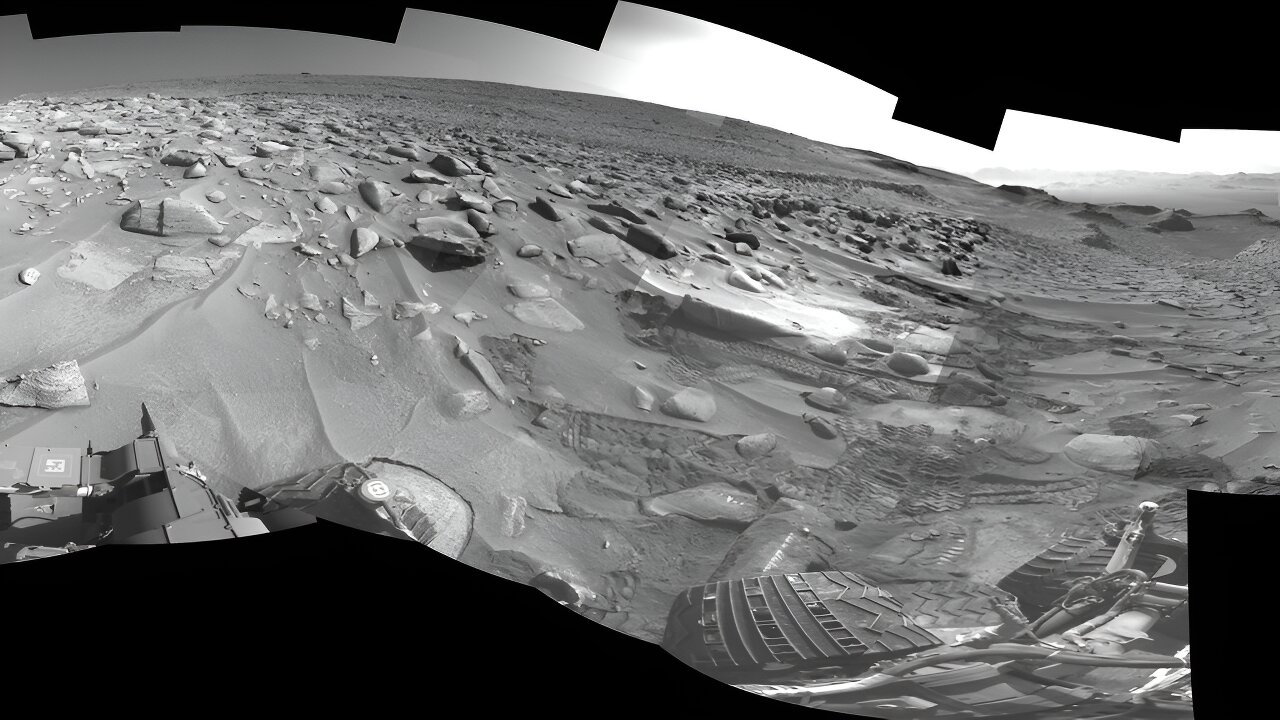On August 5th, NASA’s Curiosity rover will celebrate its 11th year on Mars with a remarkable display of its capabilities: studying the surface of the Red Planet. Recently, the rover explored a location known as “Jau” that is filled with numerous impact craters. This close-up view of so many Martian craters in one place is a rare sight for scientists. While most of these craters are small, one stands out as being as long as a basketball court. Jau serves as a stopping point on Curiosity’s journey into the foothills of Mount Sharp, a 3-mile-tall mountain that was once home to lakes, rivers, and streams billions of years ago. Each layer of the mountain represents a different era in Mars’s history, and as Curiosity continues to climb, scientists gather invaluable insights into how the landscape has evolved over time.
The climb up the mountain during the past few months has proven to be the toughest challenge Curiosity has faced. While previous climbs have been steeper and more treacherous, this particular slope presented a trifecta of obstacles: a sharp 23-degree incline, slippery sand, and rocks of wheel-size. These difficulties forced the rover to halt its progress on multiple occasions in May and June, leaving Curiosity’s drivers back on Earth perplexed. This article delves into how NASA’s Curiosity Mars rover confronted its most demanding ascent yet.
Amy Hale, one of the rover drivers at NASA’s Jet Propulsion Laboratory, likened the experience to running up a sand dune on a beach, with the added complications of boulders in the way. Hale is part of a team of 15 rover planners who write extensive lines of code to command Curiosity’s mobility system and robotic arm. While they do not operate the rover in real-time, they meticulously plan the rover’s actions the night before and receive data back from Mars after Curiosity has completed the assigned tasks. These engineers collaborate closely with scientists to determine the rover’s path, select specific imaging targets, and decide which features to investigate using the instruments mounted on Curiosity’s 7-foot robotic arm. However, the rover planners carefully assess any potential hazards and devise commands to navigate around sharp rocks while minimizing wear on the rover’s wheels. Geologists on the team leverage their field experience on Earth to identify areas with deep sand and unstable rock formations. Even the potential for a canyon wall obstructing radio communications with Earth is factored into the mission.
Despite encountering obstacles, Curiosity was never in peril during the climb to Jau. The team meticulously plans each step to protect the rover from harm, programming it to come to a halt if unexpected situations arise. These stoppages, known as “faults,” occur when the wheels slip excessively or when a wheel becomes elevated by a large rock. On the route to Jau, the rover found itself in both scenarios multiple times, leading Dane Schoelen, Curiosity’s strategic route planning lead at JPL, to refer to the situation as a game of “fault bingo.” Rather than persist with the original course and continue struggling, Schoelen and his colleagues devised a lateral detour that directed Curiosity toward a spot approximately 492 feet away where the incline seemed to level out. Utilizing imagery from NASA’s Mars Reconnaissance Orbiter, the rover planners obtained a broad understanding of the terrain’s characteristics. However, it is impossible to determine the precise slope or the presence of rocks from space images alone. This detour added a few weeks to the journey to Jau but proved to be a fruitful decision, as it allowed Curiosity to surmount the challenging slope. Schoelen expressed his satisfaction with the achievement, describing the exhilaration of finally reaching the ridge and beholding the breathtaking vista. From his perspective, as someone who spends his days immersed in Mars imagery, Schoelen feels as though he stands alongside Curiosity, contemplating the tremendous progress made.
Following the arduous ascent, Curiosity’s scientists concluded their investigation of the Jau crater cluster. These clusters, a common sight on Mars, can form when a meteor breaks up in the planet’s atmosphere or when fragments are ejected by a distant meteoroid impact. Scientists are particularly interested in understanding how the region’s salt-enriched terrain influenced the formation and transformation of these craters over time. Despite the challenges Mars has thrown its way, Curiosity remains undeterred and will soon embark on further exploration of a new area higher up Mount Sharp.
Citation: “Curiosity rover faces its toughest climb yet on Mars” (2023, August 3) retrieved 3 August 2023 from https://phys.org/news/2023-08-curiosity-rover-toughest-climb-mars.html This document is subject to copyright. Apart from any fair dealing for the purpose of private study or research, no part may be reproduced without the written permission. The content is provided for information purposes only.
Denial of responsibility! TechCodex is an automatic aggregator of the all world’s media. In each content, the hyperlink to the primary source is specified. All trademarks belong to their rightful owners, and all materials to their authors. For any complaint, please reach us at – [email protected]. We will take necessary action within 24 hours.

Jessica Irvine is a tech enthusiast specializing in gadgets. From smart home devices to cutting-edge electronics, Jessica explores the world of consumer tech, offering readers comprehensive reviews, hands-on experiences, and expert insights into the coolest and most innovative gadgets on the market.


